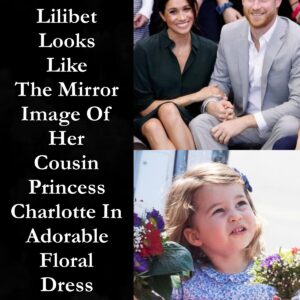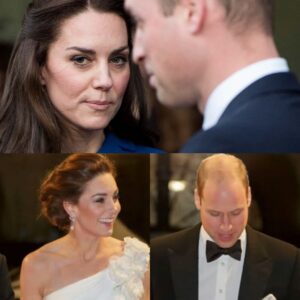History Behind The Queen’s Cartier Halo Tiara
The Cartier Halo Tiara stands as one of the most elegant and iconic pieces in the British royal jewelry collection, embodying a blend of history, artistry, and sentimentality. Its story is interwoven with the lives of multiple generations of royals, reflecting not only the opulence of the monarchy but also its evolving traditions.
This exquisite diadem, crafted by the renowned French jewelry house Cartier, is more than a dazzling accessory—it is a symbol of the enduring grace and poise of the royal family.
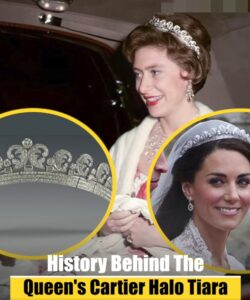
The origins of the Cartier Halo Tiara trace back to 1936 when it was commissioned by King George VI, then the Duke of York. The piece was created as a gift for his wife, the Duchess of York, who would later ascend the throne as Queen Elizabeth, The Queen Mother.
It was no ordinary gift but one of profound affection and support during a pivotal moment in their lives. George VI commissioned Cartier to design a tiara that encapsulated both elegance and modernity, a reflection of his wife’s timeless style and the new era they were stepping into.
The tiara itself is a masterpiece of craftsmanship. Composed of 739 brilliant-cut diamonds and 149 baguette-cut diamonds, it is set in platinum, giving it a radiant, almost ethereal quality.
The design is a series of scrolls or “halo” motifs, hence its name, with smaller scrolls forming the inner structure. This intricate yet airy pattern exudes a sense of lightness, making it versatile enough for various royal occasions. Despite its understated elegance, the tiara has a commanding presence, drawing attention without overwhelming the wearer.

Initially, the Cartier Halo Tiara was not meant for a queen. After George VI gifted it to Elizabeth, she wore it sparingly. Instead, it became a piece associated with the younger generation of royals.
The tiara was eventually passed down to Queen Elizabeth II on her 18th birthday, marking the beginning of its journey as a symbol of youthful royal charm. Interestingly, the Queen herself never publicly wore the tiara, choosing instead to lend it to other members of the family, thereby allowing it to shine on different occasions and personalities.
One of the tiara’s most memorable appearances occurred on April 29, 2011, when it adorned the head of Catherine Middleton, the Duchess of Cambridge, on her wedding day.
The decision to wear the Cartier Halo Tiara was both surprising and deeply symbolic. Unlike the grander tiaras in the royal vault, such as the Cambridge Lover’s Knot or the Girls of Great Britain and Ireland Tiara, the Halo Tiara carried an understated elegance that perfectly complemented Catherine’s modern yet classic bridal look.

Catherine’s choice reflected her role as a future queen consort who values tradition but also embraces contemporary sensibilities. The tiara’s lightness and delicacy paired beautifully with her Alexander McQueen gown, creating a harmonious balance between royal protocol and personal style. This moment cemented the Halo Tiara’s place in public memory, associating it with a new era of the monarchy that values accessibility and relatability.
Beyond its aesthetic appeal, the Cartier Halo Tiara has a fascinating historical and emotional resonance. Its journey through the royal family mirrors the transitions and transformations within the monarchy itself.
From a loving gift from a husband to his wife, to a coming-of-age present for a young princess, and finally to a symbol of continuity on a future queen consort’s wedding day, the tiara has quietly witnessed the highs and lows of royal life.
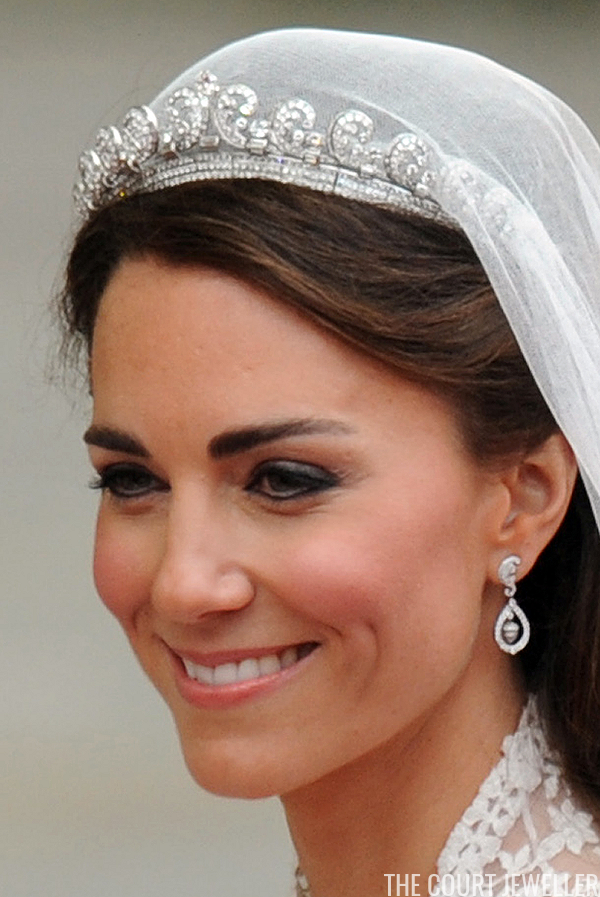
The tiara’s story also highlights the monarchy’s relationship with its jewelry. Unlike many other royal artifacts that remain locked away as relics of the past, pieces like the Cartier Halo Tiara are imbued with life through their use. Each appearance adds another layer of meaning, connecting past and present in a way that keeps the monarchy relevant in the public’s imagination.
Interestingly, the tiara’s significance extends beyond its royal connections. Its creation by Cartier underscores the enduring partnership between the British monarchy and some of the world’s most prestigious jewelry houses.
Cartier’s meticulous craftsmanship and innovative designs have been favored by the royal family for generations, making the Halo Tiara a testament to this enduring collaboration.
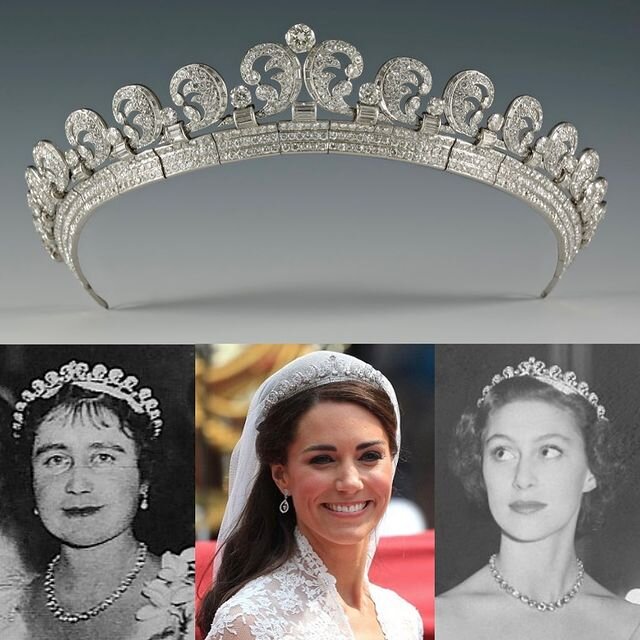
Today, the Cartier Halo Tiara remains one of the most recognizable and cherished pieces in the royal collection. Its simplicity and elegance make it a favorite among royal watchers and fashion enthusiasts alike. Yet, its true beauty lies in its ability to transcend its material value. It is not merely a collection of diamonds and platinum but a piece imbued with love, legacy, and history.
In the grand tapestry of the British monarchy, the Cartier Halo Tiara shines as a subtle yet powerful thread. It speaks to the personal stories and relationships that define the royal family, reminding us that even amidst the splendor of crowns and jewels, it is the human connections that truly matter. The tiara’s legacy, like that of the monarchy itself, continues to evolve, ensuring its place in the annals of history for generations to come.
News
Princess Lilibet Looks Like The Mirror Image Of Her Cousin Princess Charlotte In Adorable Floral Dress
Princess Lilibet Looks Like The Mirror Image Of Her Cousin Princess Charlotte In Adorable Floral Dress The Duke and Duchess of Sussex sent out their 2024 holiday card in late December 2024, and it’s been melting hearts ever since. The holiday card showcased six images that…
Meghan Markle Mourns Death of Rescue Beagle Guy: ‘I Have Cried Too Many Tears to Count’
Meghan Markle Mourns Death of Rescue Beagle Guy: ‘I Have Cried Too Many Tears to Count’ Guy, a rescue from a Kentucky kill shelter, has held a special place in the Duchess of Sussex’s heart since 2015 Meghan Markle; Meghan…
William and Kate Middleton “not as perfect as it seems”: Inside their rocky relationship
William and Kate Middleton “not as perfect as it seems”: Inside their rocky relationship Prince William and Kate Middleton have their ups and downs like any other relationship. It began in 2007 when the couple reportedly split up for various…
Bruce Springsteen, 74, gives alarming health update after postponing tour – and it confirms what we feared
Bruce Springsteen, 74, gives alarming health update after postponing tour – and it confirms what we feared Bruce Springsteen has had a rough time of it over the past few months, with his health issues forcing him to postpone all remaining…
Jon Bon Jovi and Dorothea Hurley: Rocking Compassion by Feeding the Homeless
Jon Bon Jovi and Dorothea Hurley: Rocking Compassion by Feeding the Homeless Jon Bon Jovi, a rock icon known for his powerful ballads and sold-out arenas, has proven time and time again that his heart is as big as his…
Uncommon images of Princess Diana, one of the most photographed people on Earth
Uncommon images of Princess Diana, one of the most photographed people on Earth Known as the People’s Princess because of her nurturing and compassionate nature, as well as love for the ordinary citizens, Lady Di will forever be remembered as…
End of content
No more pages to load
